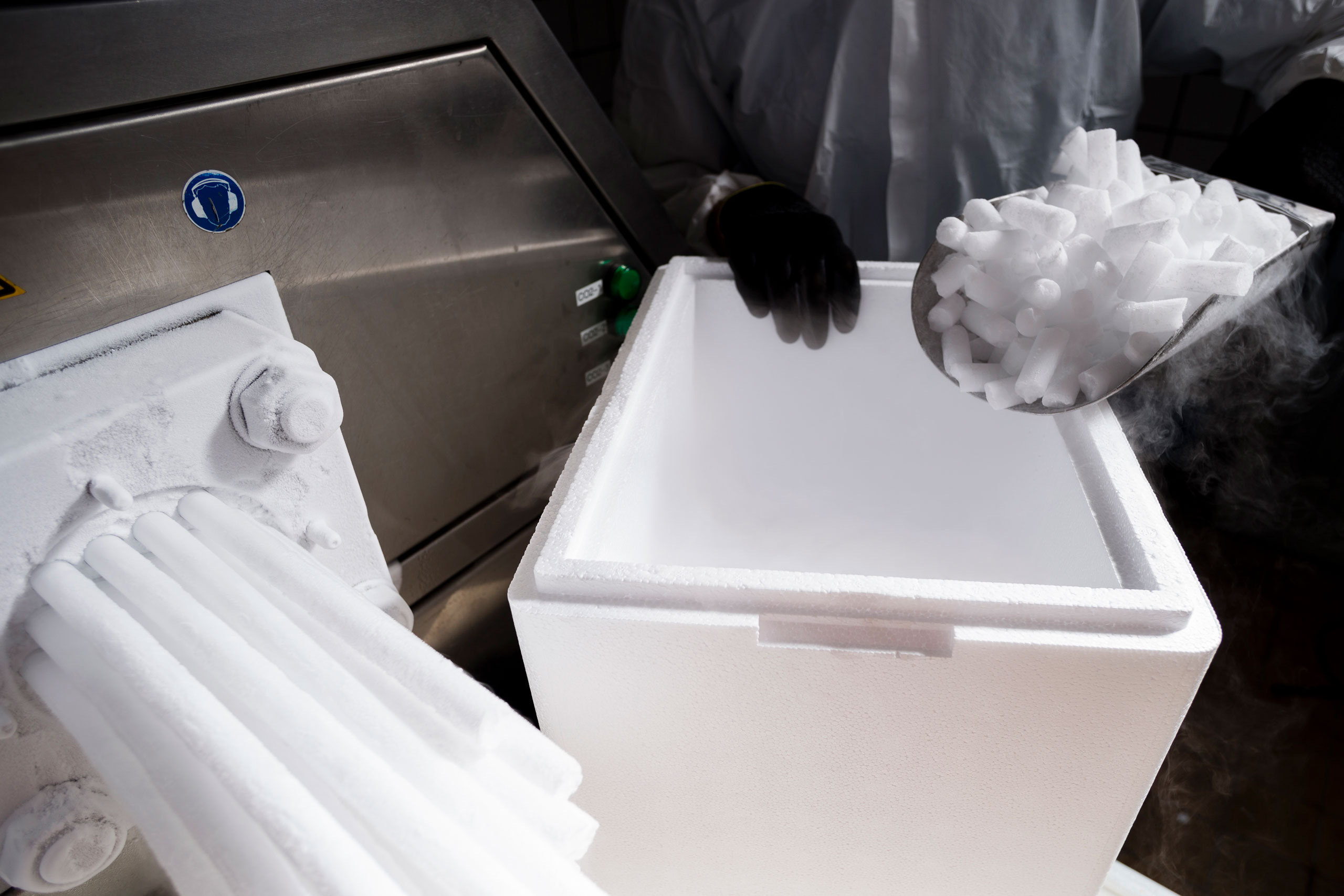White Lion | Dry ice blasting machine | Dry ice guide | Dry ice transport | Handling dry ice
Handling dry ice is a process that requires both precise knowledge and careful handling, especially during transportation. As dry ice turns into gaseous carbon dioxide when heated, it is important to understand and minimize the associated risks.
First of all, it is crucial to wear personal protective equipment when handling dry ice. This includes insulating gloves to prevent skin injuries caused by contact with the extremely low temperature.
When storing or handling dry ice, the necessary safety regulations should be observed in order to avoid accidents.
If dry ice needs to be transported, the choice of a suitable container is crucial. Special containers that are well insulated and allow sufficient ventilation are ideal. During transportation, care should be taken to ensure that the means of transport is sufficiently ventilated and that as little carbon dioxide as possible accumulates. This is particularly important if transportation takes place in closed or poorly ventilated vehicles.
Useful information about dry ice, dry ice blasting machines, dry ice blasting systems and dry ice cleaning is conveniently available in our quarterly “Dry Ice News”. Please add your e-mail address to register without obligation. You can revoke your consent at any time with effect for the future. For information on the processing of your data, including for the improvement of our services, please refer to our data protection information.
The handling of dry ice requires a certain degree of caution and knowledge of the actual properties of dry ice. Employees working with dry ice should receive regular training to inform them of the risks and safe handling practices. Clear use of signage and warnings will also help to raise awareness of the dangers of dry ice.
Overall, it is important to realize that while handling dry ice does present some challenges, it can be managed safely and effectively with the right precautions and a sound knowledge base. By following these guidelines, the benefits of dry ice can be maximized, whether in the food industry, science or many other applications, without compromising on safety.


If you regularly need large quantities of dry ice, we recommend our WL Antarctica S.

You are currently viewing a placeholder content from YouTube. To access the actual content, click the button below. Please note that doing so will share data with third-party providers.
More InformationYou need to load content from reCAPTCHA to submit the form. Please note that doing so will share data with third-party providers.
More Information